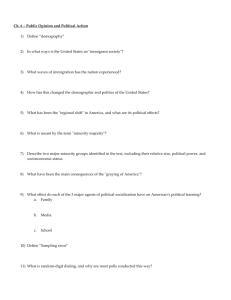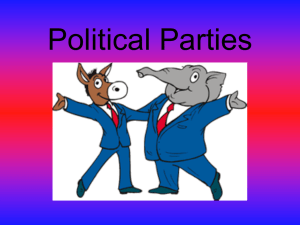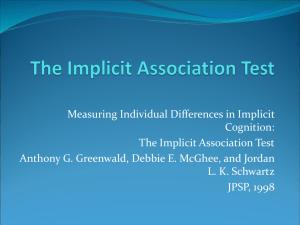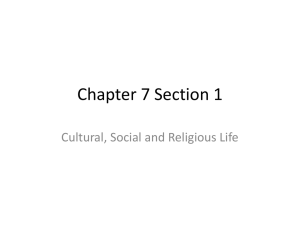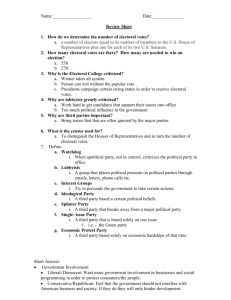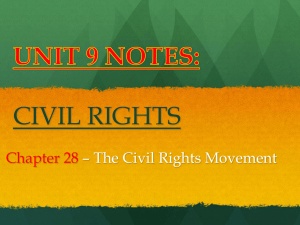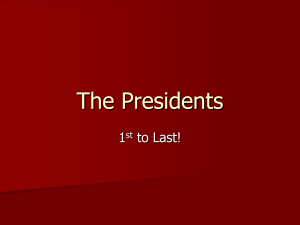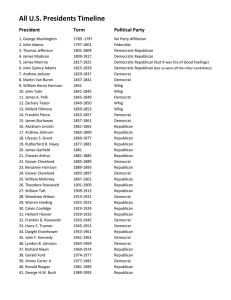LECTURE 05_The Challenge of Cities
advertisement
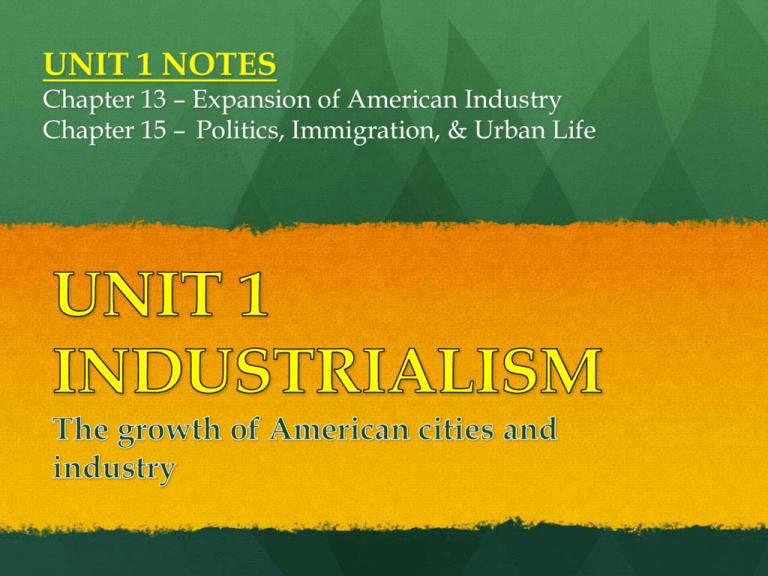
UNIT 1 NOTES Chapter 13 – Expansion of American Industry Chapter 15 – Politics, Immigration, & Urban Life America: Pathways to the Present Chapter 15 Politics, Immigration, and Urban Life (1870–1915) CORE OBJECTIVE: Explain the changes in late 1800’s urban life relating to Immigration, Industrialization, and Politics in the Gilded Age. Objective: 1.5: Analyze the challenges immigrants and cities faced late 1800s urban cities. Objective 1.6: How did urban living conditions change as cities rapidly expanded in the late 1800s? American Industry will grow with positive and negative consequences Presidents of the United States George Washington; Federalist (1788) John Adams; Federalist (1796) Thomas Jefferson (1800) James Madison (1808) James Monroe (1816) John Quincy Adams (1824) Andrew Jackson; Democrat (1828) Martin Van Buren; Democrat (1836) William Henry Harrison; Whig (1840) John Tyler; Whig (1841) #11 - 20 James K. Polk; Democrat (1844) Zachary Taylor; Whig (1848) Millard Fillmore; Whig (1850) Franklin Pierce; Democrat (1852) James Buchanan; Democrat (1856) Abraham Lincoln; Republican (1860) Andrew Johnson; Democrat (1865) Ulysses S. Grant; Republican (1868) Rutherford B. Hayes; Republican (1876) James Garfield; Republican (1880) #21 - … Chester A. Arthur; Republican (1881) Grover Cleveland; Democrat (1884) Benjamin Harrison; Republican (1888) Grover Cleveland; Democrat (1892) William McKinley; Republican (1896) Theodore Roosevelt; Republican (1901) America: Pathways to the Present Chapter 15: Politics, Immigration, and Urban Life (1870–1915) Section 1: Politics in the Gilded Age Section 2: People on the Move Section 3: The Challenge of the Cities Section 4: Ideas for Reform CHAPTER 15 SECTION 3 THE CHALLENGE OF CITIES LIVING CONDITIONS Apartments Many 1800s city workers lived in run-down slums & tenements To make ends meet, a family of eight living in a 2-room apartment would take in as many as six boarders Many did not have beds to sleep on; no windows to the outside Few had toilets, running water, access to fresh air This resulted in high rates of infectious disease Diphtheria, typhoid fever, pneumonia Sanitation Streets: manure, open gutters, factory smoke, poor trash collection Jacob Riis – How the Other Half Lives First Flash Photography Pictures like this are shown to the wealthy for the first time This leads to change as sanitation laws are created and slums are shut down THE NEW TENEMENT THE 1900s CHANGES Slowly changes happen at the turn of the 20th Century Contractors hired to sweep streets, collect garbage, clean outhouses Cities develop sanitation and building codes for a healthier environment By 1900, cities develop sewer lines, create sanitation departments Filtration introduced 1870s, chlorination in 1908 CHAPTER 15 SECTION 4 IDEAS FOR REFORM Settlement Houses Settlement houses served as community centers and social service agencies that helped the needy. Hull House, a settlement house in Chicago, offered social services: cultural events, classes, childcare, employment assistance, and health-care clinics. Founded by Jane Adams Purity Crusaders The temperance movement, an organized 1800s campaign to eliminate alcohol use Three major groups led the movement and supported prohibition, a ban on the manufacture and sale of alcoholic beverages. These groups believed that drinking led to personal tragedies, and they also saw a link among saloons, immigrants, and political bosses. Purity Crusaders As cities grew, drugs, gambling, prostitution, and other forms of vice (immoral or corrupt behavior) became big business. Many residents fought to rid their communities of these activities. “Purity crusaders” led the way. They fought against such things as the sending of obscene materials through the mail, saloons, and political machines. Settlement houses of the late 1800s offered poor city dwellers a. b. c. d. Money. Protection from crime. Social services. Protection from political machines. Which of the following best characterizes living conditions of urban areas by the early 1900s? a. b. c. d. A growing middle-class population Open spaces, trees, and grass Ethnically mixed neighborhoods Slums and tenements Settlement houses of the late 1800s offered poor city dwellers a. b. c. d. Money. Protection from crime. Social services. Protection from political machines. Which of the following best characterizes living conditions of urban areas by the early 1900s? a. b. c. d. A growing middle-class population Open spaces, trees, and grass Ethnically mixed neighborhoods Slums and tenements CRASH COURSE Cities and Immigration! https://www.youtube.com/watch?v=RRhjqqe750A &index=26&list=PL8dPuuaLjXtMwmepBjTSG593e G7ObzO7s
